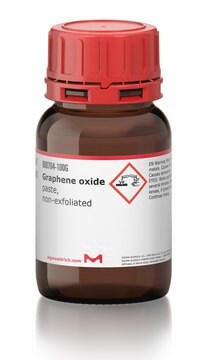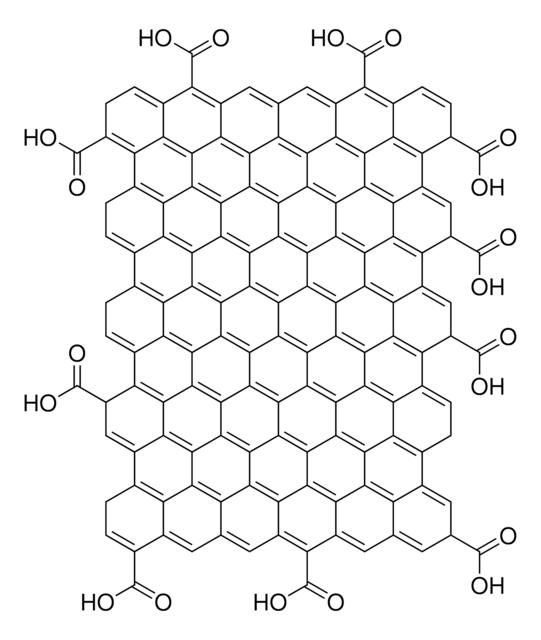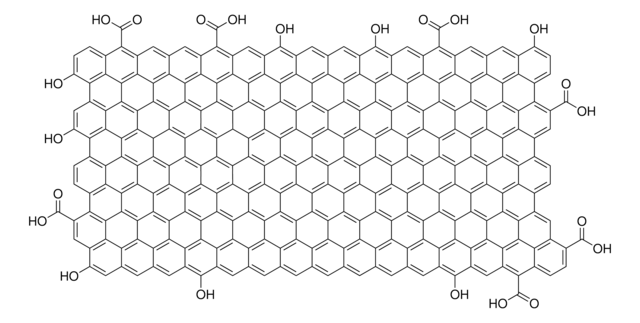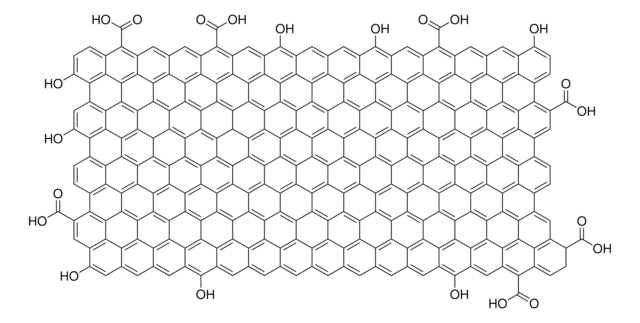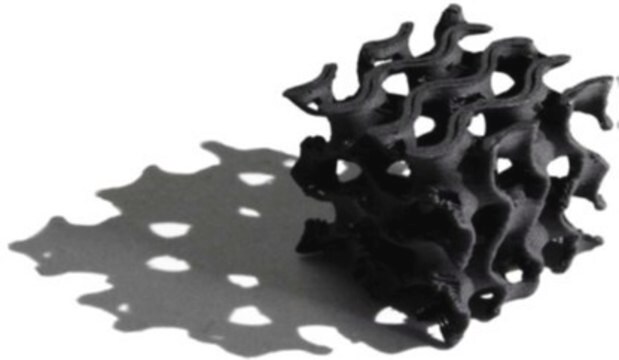916579
3D Printable Graphene Oxide Ink
avg. no. of layers, 1
Synonim(y):
3D Printing graphene oxide ink, Direct extrusion printable graphene oxide ink
About This Item
Polecane produkty
opis
Graphene oxide sheet size: 300-800 nm lateral size
Number of layer for graphene oxide: single layer
Poziom jakości
Postać
liquid
Właściwości
avg. no. of layers 1
charakterystyka ekologicznej alternatywy
Design for Energy Efficiency
Learn more about the Principles of Green Chemistry.
stężenie
40 mg/mL (Graphene oxide aquous ink)
lepkość
100-210 Pa.s (25 °C at shear rate of 10 s-1)
kategoria ekologicznej alternatywy
, Enabling
temp. przechowywania
2-8°C
Powiązane kategorie
Opis ogólny
Zastosowanie
Uwaga dotycząca przygotowania
Bring the ink to room temeprature, best to mix the ink in a planetary mixer before usage.
Printing:
Recommended 3D printing nozzle diameter size is 400 micron.
Post printing:
After 3D printing, this ink can be directly freeze-dried in liquid nitrogen and vacuum to obtain free- standing graphene oxide aerogel.
This ink can also be processed by adding gelling agents to enable a covalent bond established between the graphene oxide sheets. Gelation agents such as ammonium carbonate, ammonium hydroxide, resorcinol formaldehyde have all been reported to be sufficient. After gelation, the wet GO gels printed parts are washed in acetone to remove water from the pores. Supercritical CO2 can then be used to dry the GO gels.
Curing:
Parts that are printed with gelling agent can be cured in sealed glass vials at 85 °C.
The dried aerogels are generally reduced to graphene aerogels by thermal treatment at 1050 °C under inert atmosphere. Other chemical reduction methods include hydrazine reduction, dried aerogels can also be reduced using hydroiodic acid, followed by washing in ethanol, water and then freeze drying.
Przechowywanie i stabilność
Kod klasy składowania
10 - Combustible liquids
Klasa zagrożenia wodnego (WGK)
WGK 3
Certyfikaty analizy (CoA)
Poszukaj Certyfikaty analizy (CoA), wpisując numer partii/serii produktów. Numery serii i partii można znaleźć na etykiecie produktu po słowach „seria” lub „partia”.
Masz już ten produkt?
Dokumenty związane z niedawno zakupionymi produktami zostały zamieszczone w Bibliotece dokumentów.
Nasz zespół naukowców ma doświadczenie we wszystkich obszarach badań, w tym w naukach przyrodniczych, materiałoznawstwie, syntezie chemicznej, chromatografii, analityce i wielu innych dziedzinach.
Skontaktuj się z zespołem ds. pomocy technicznej